
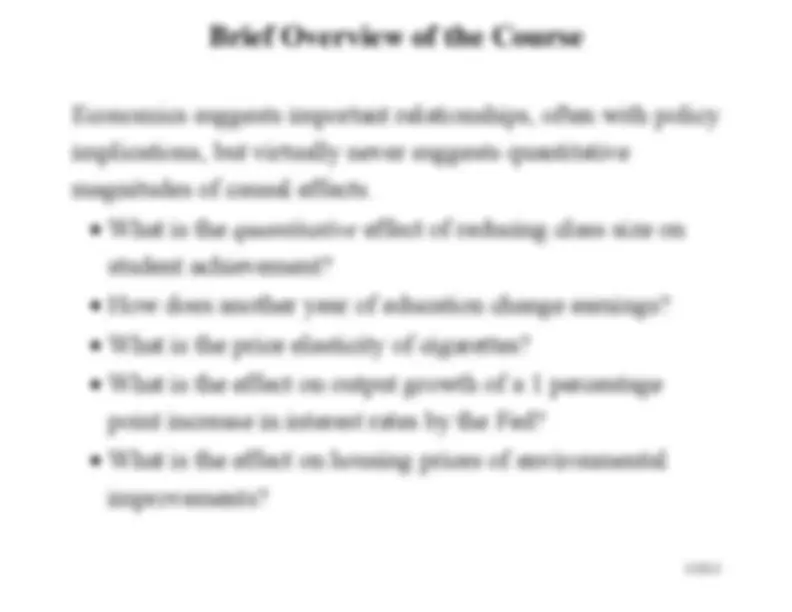
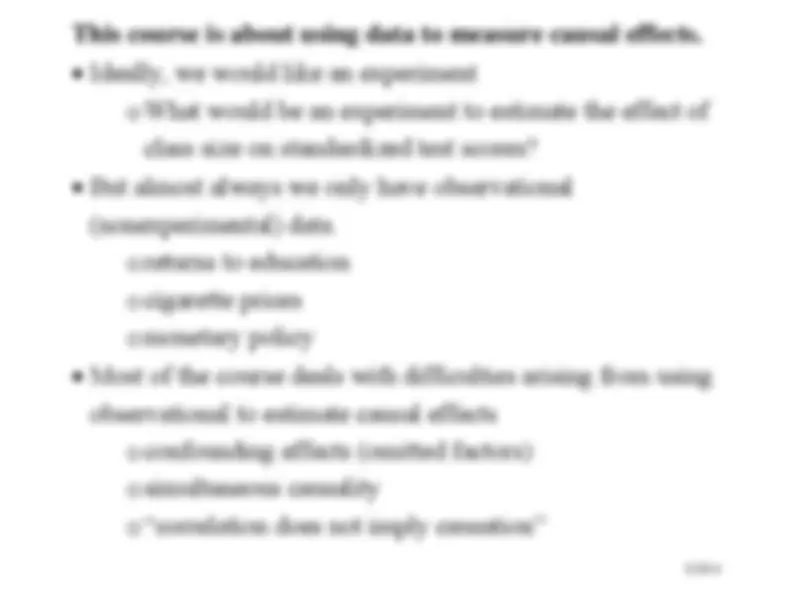
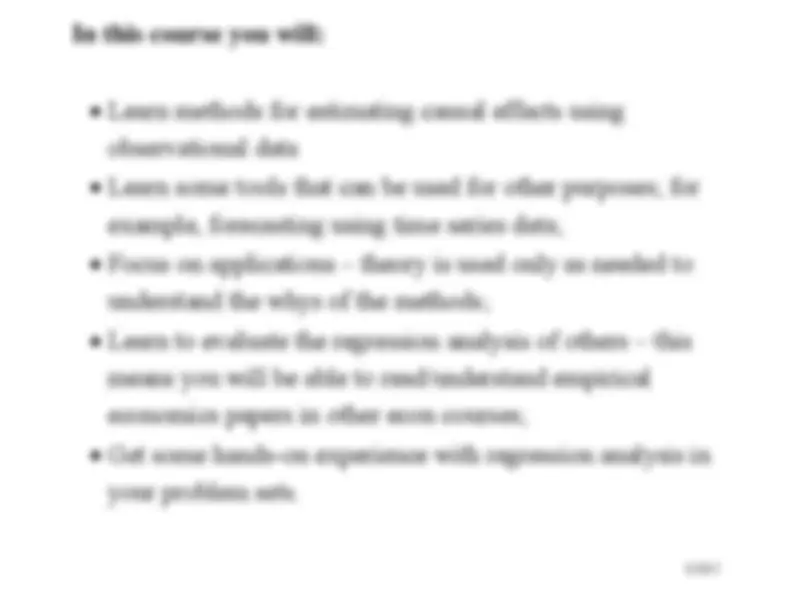
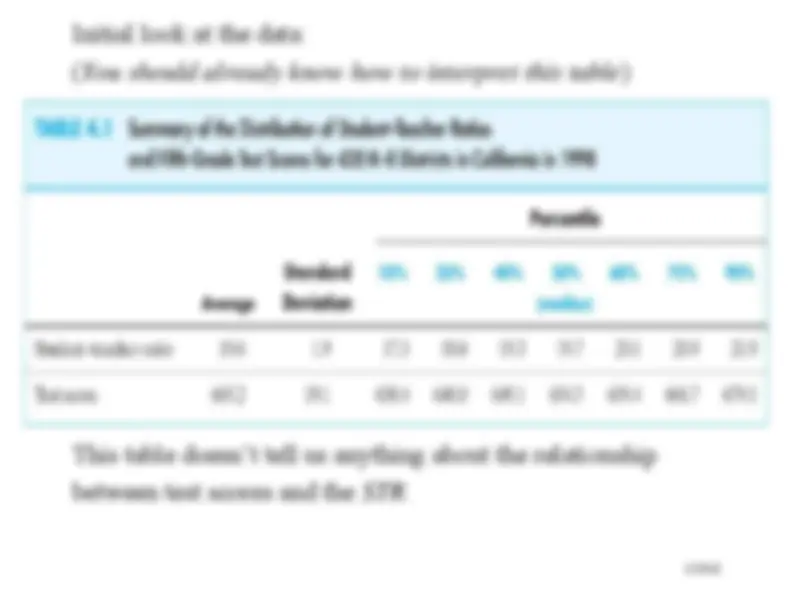
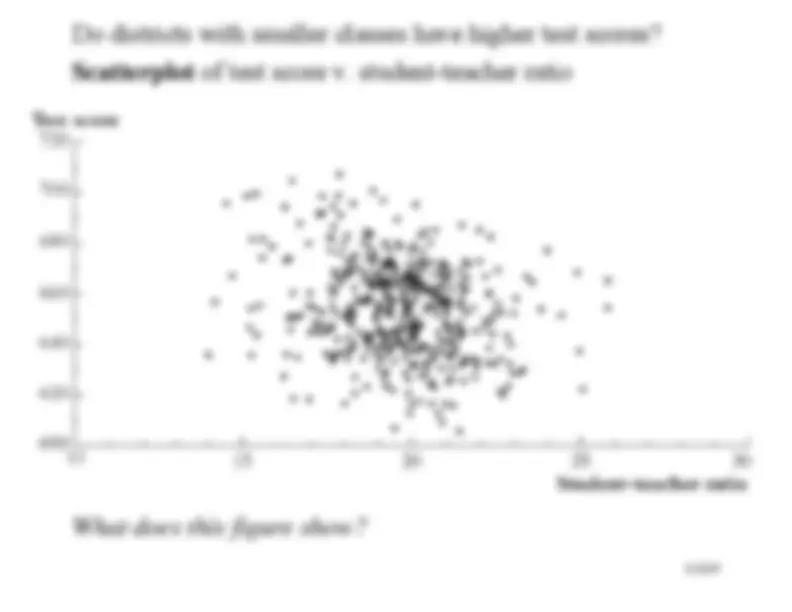

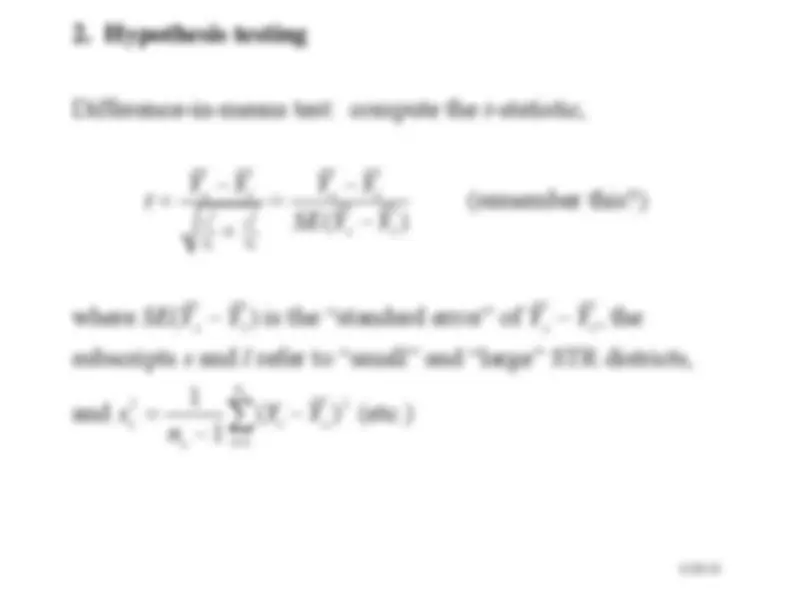
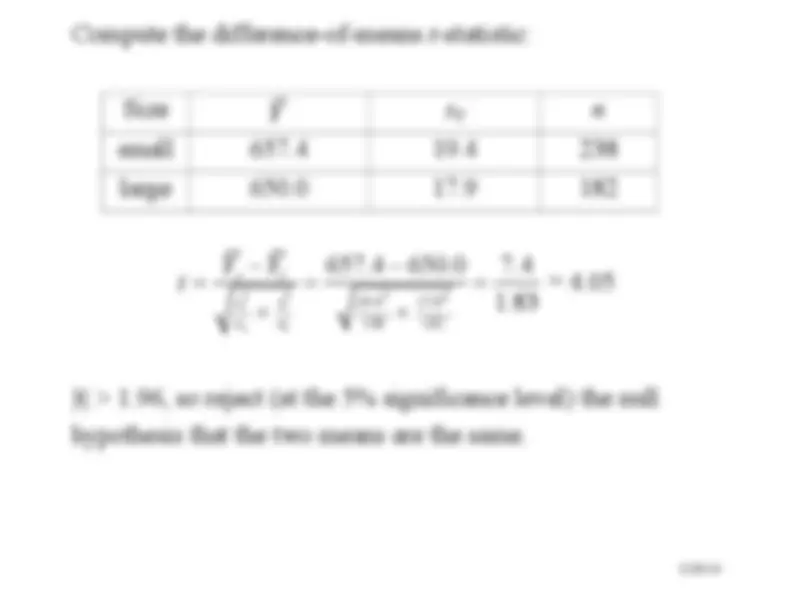
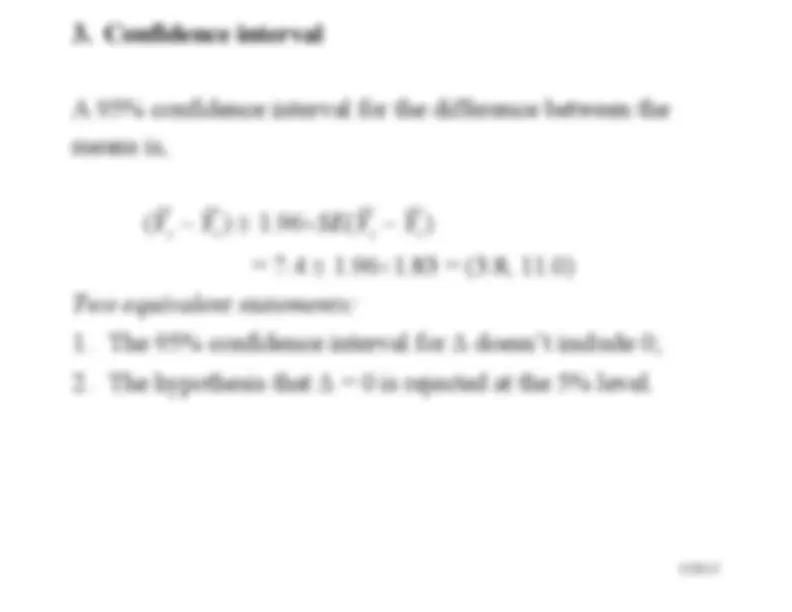
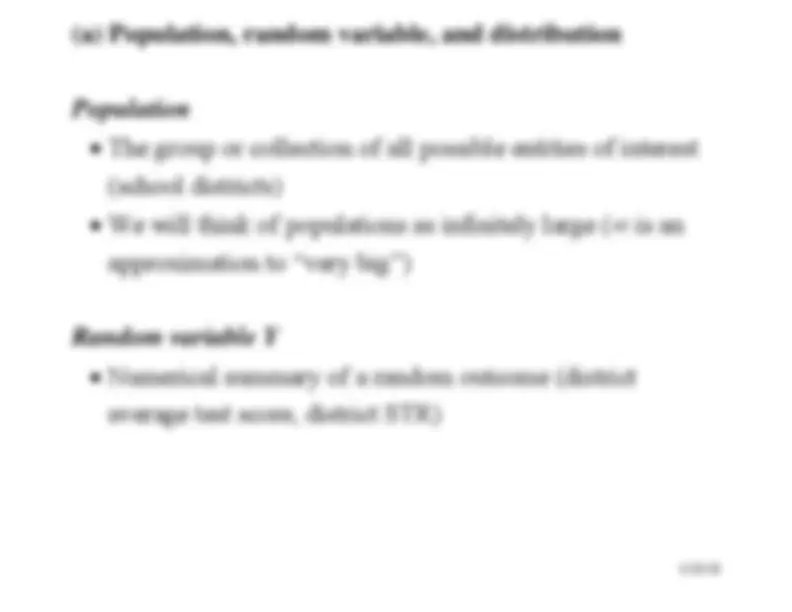
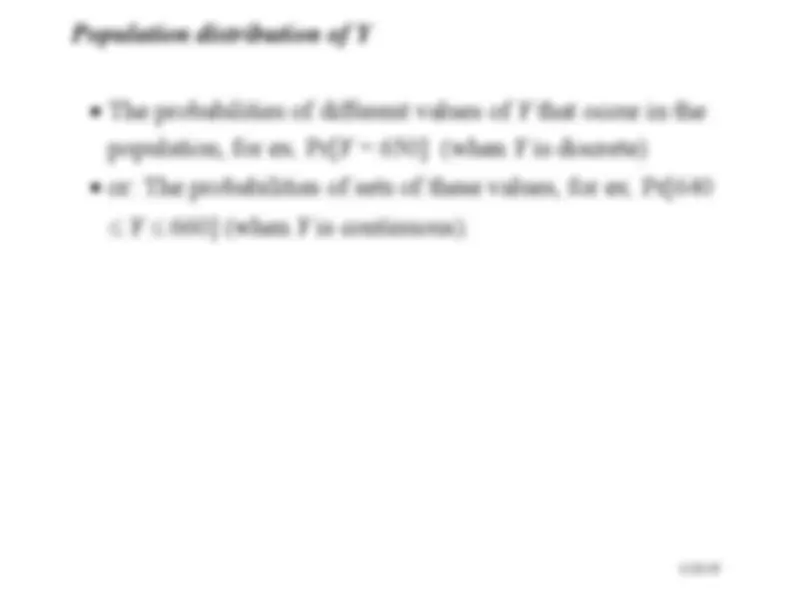
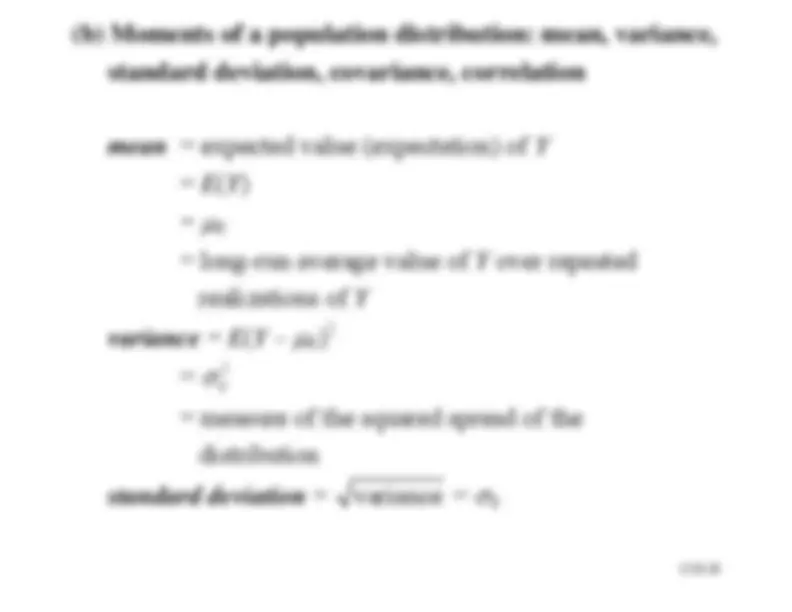
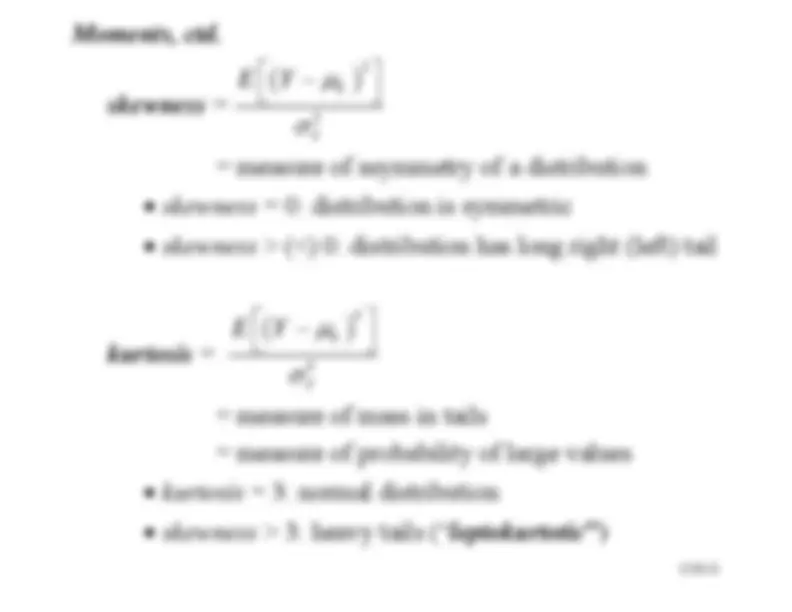
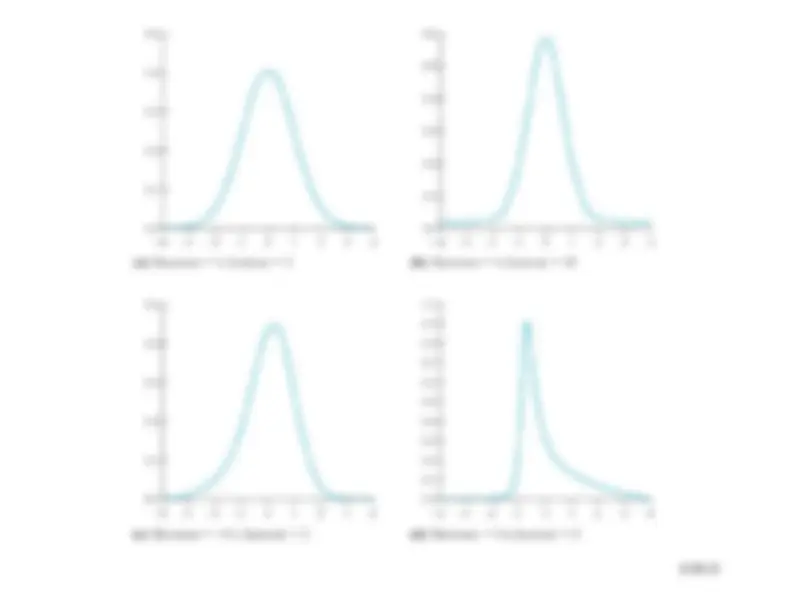
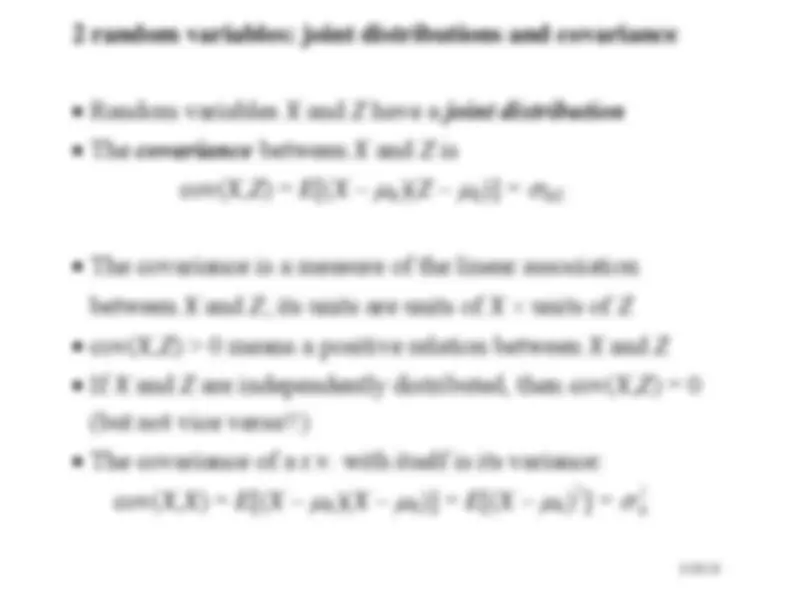
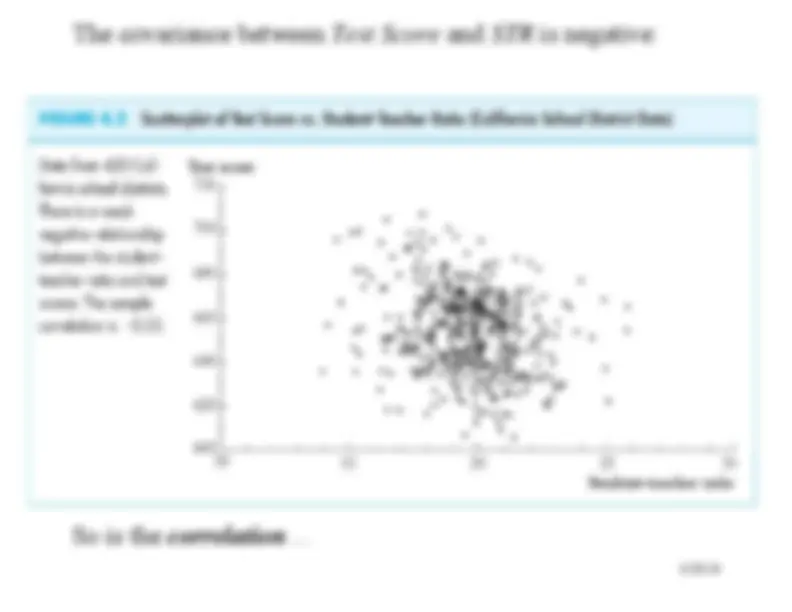
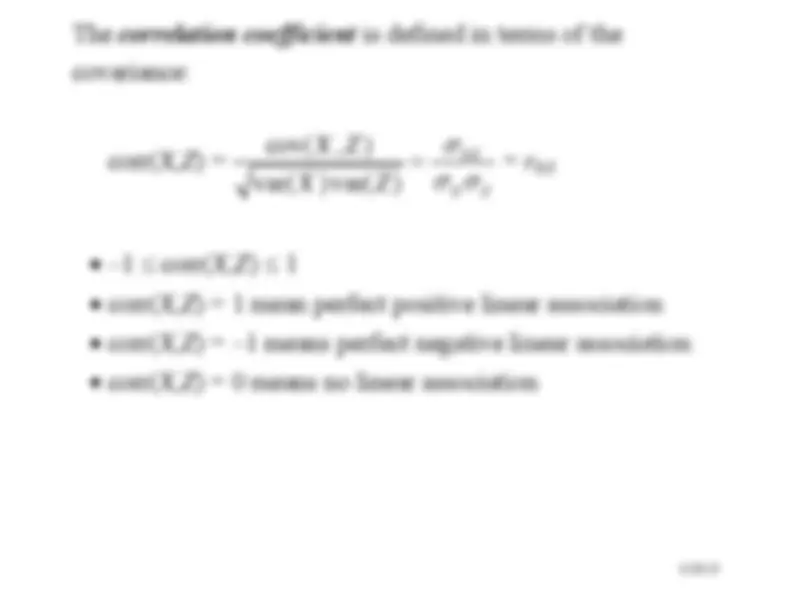
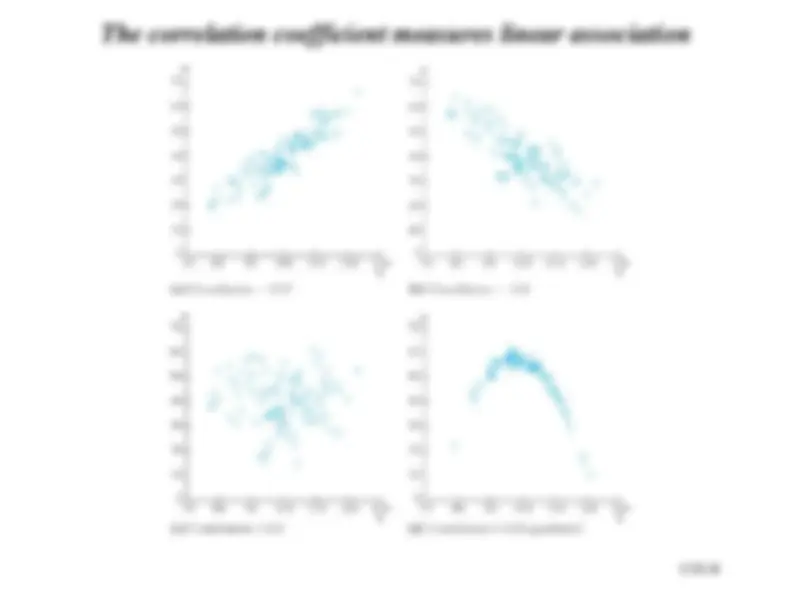
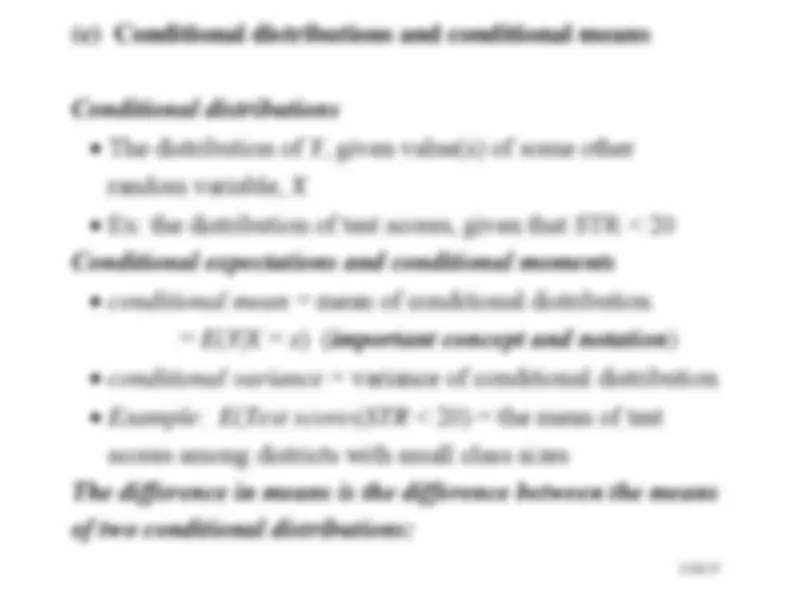
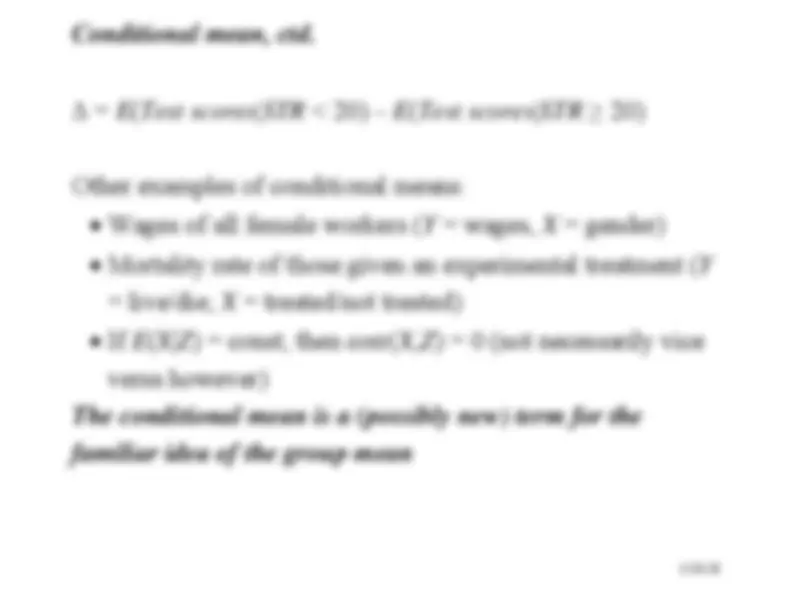
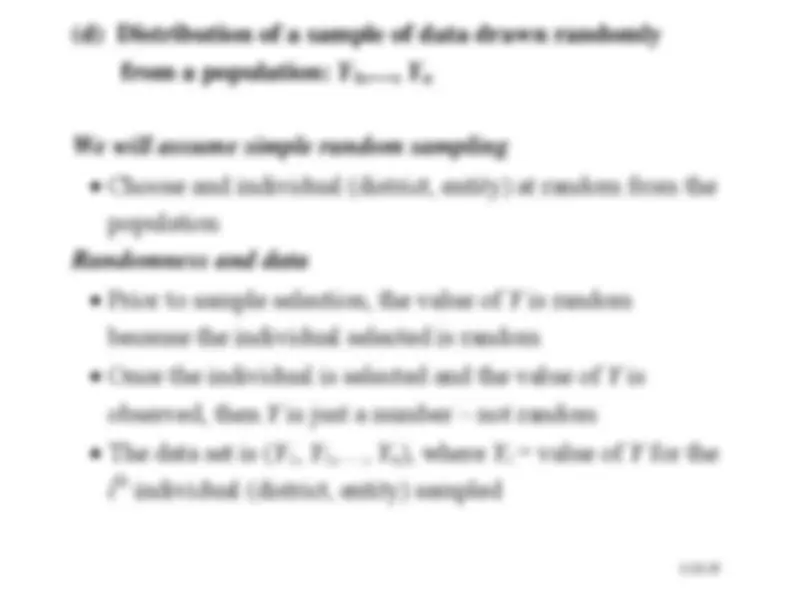
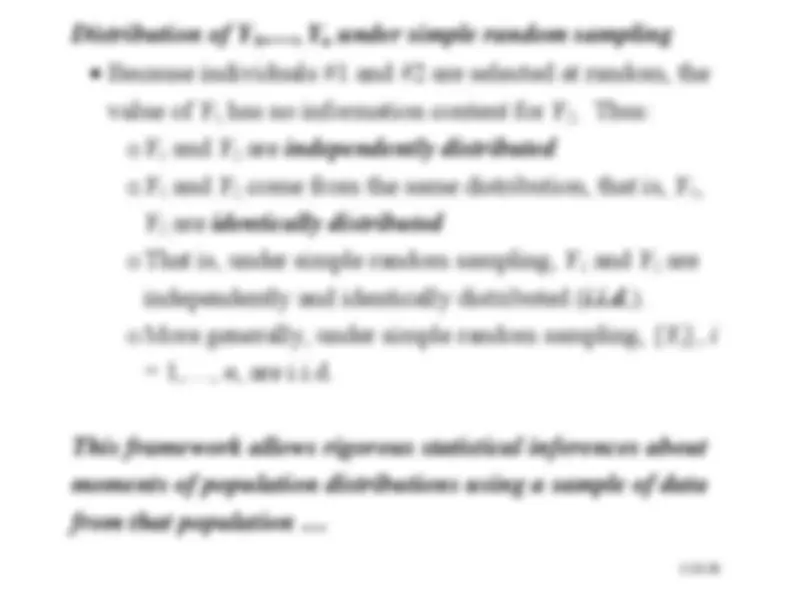
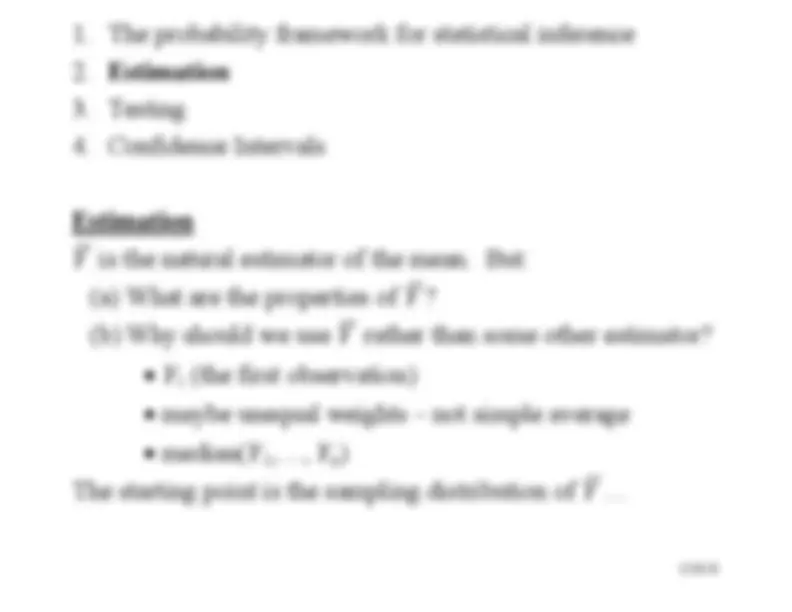
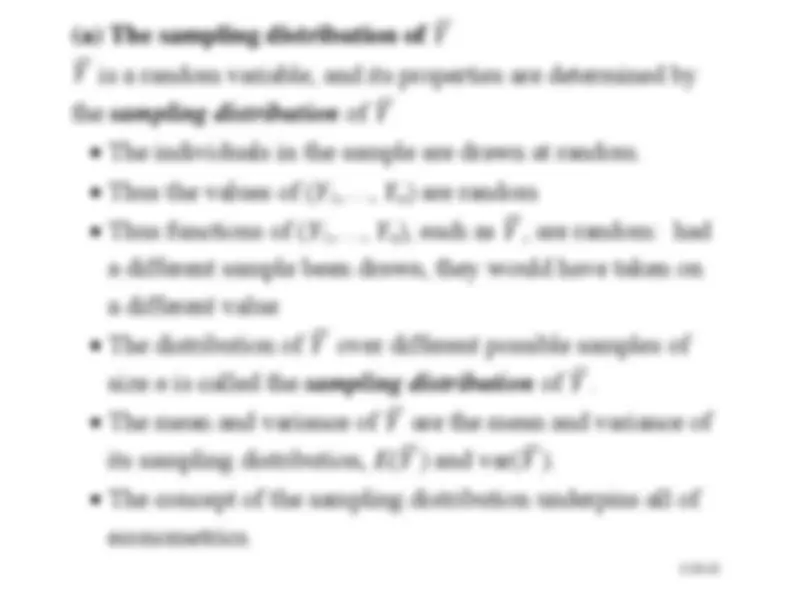
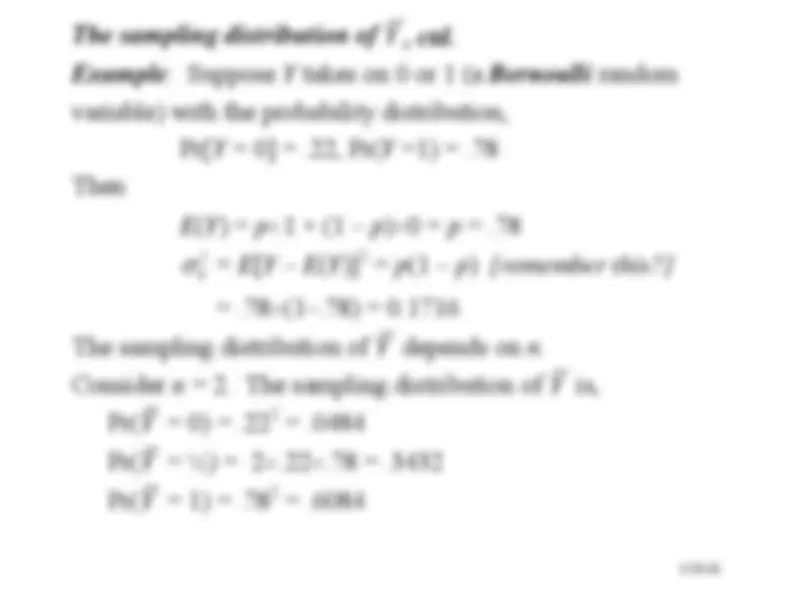
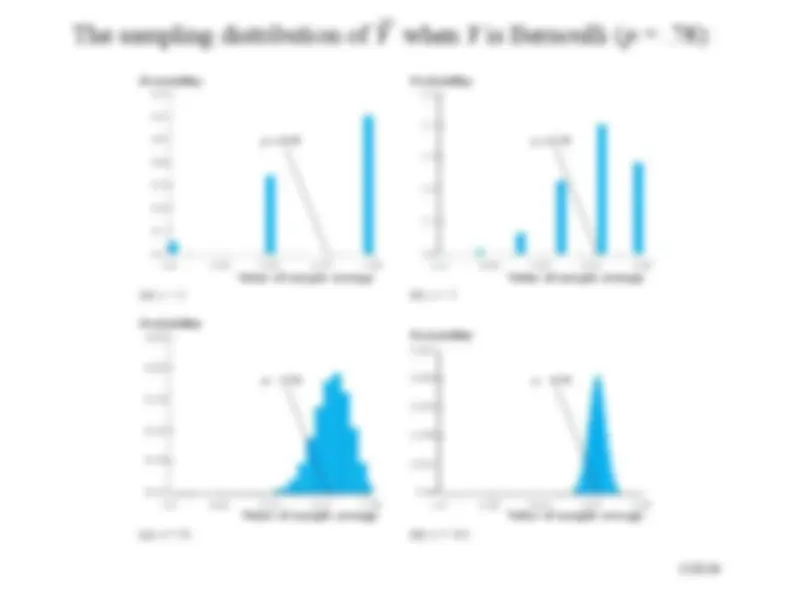
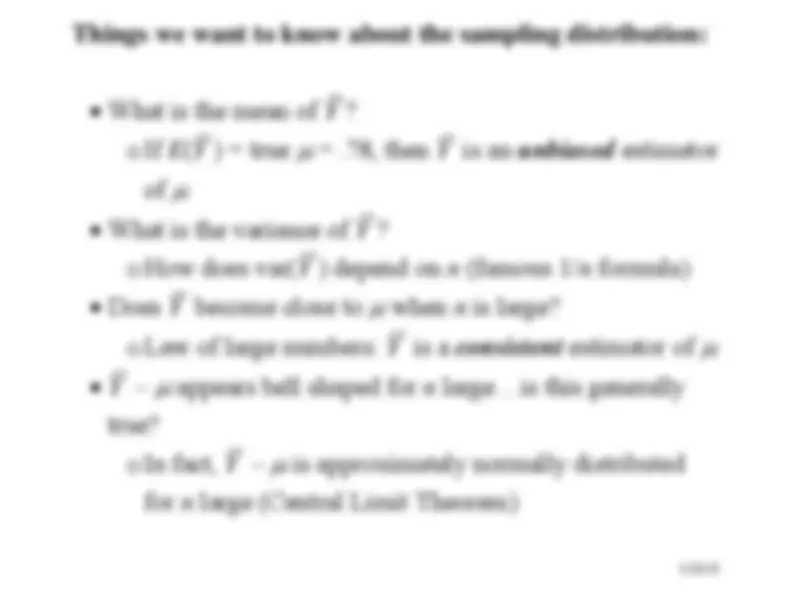
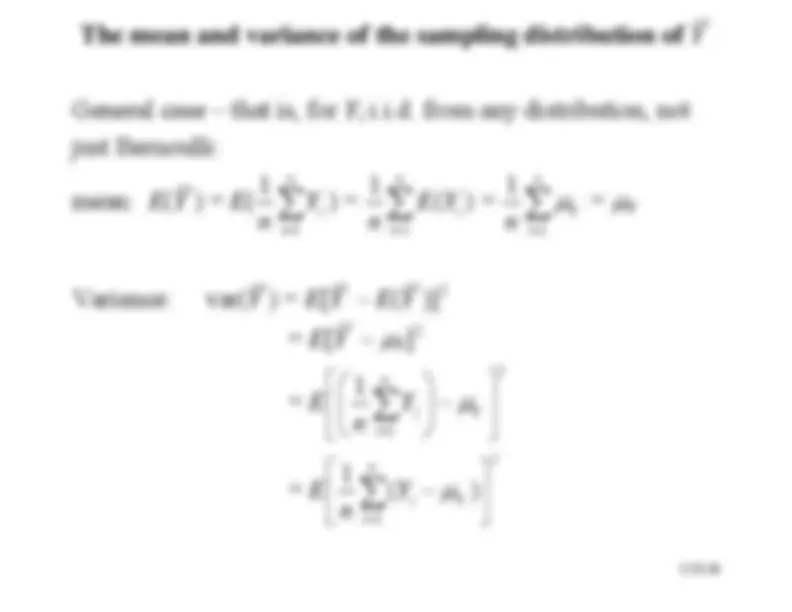
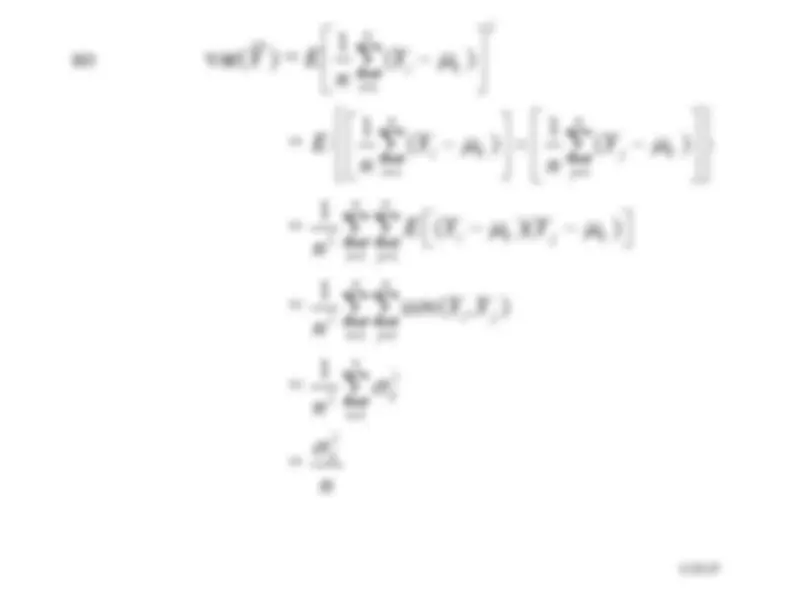
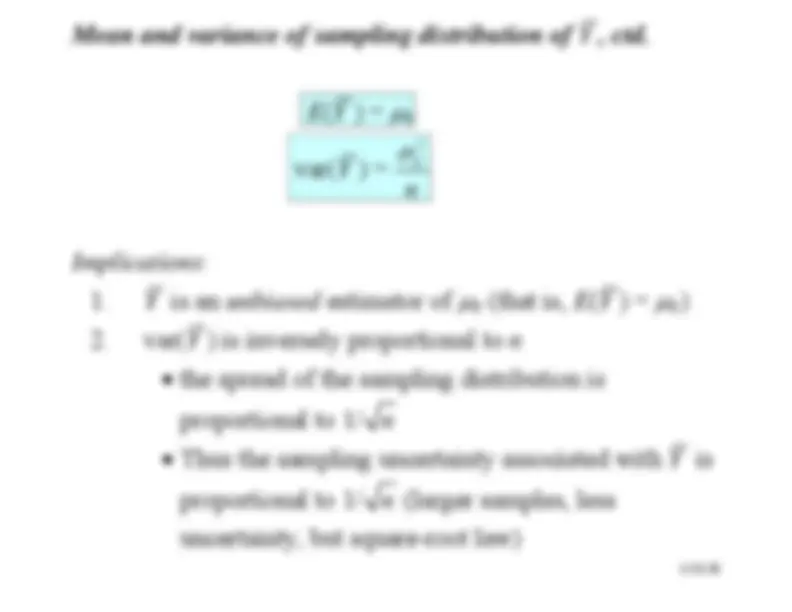
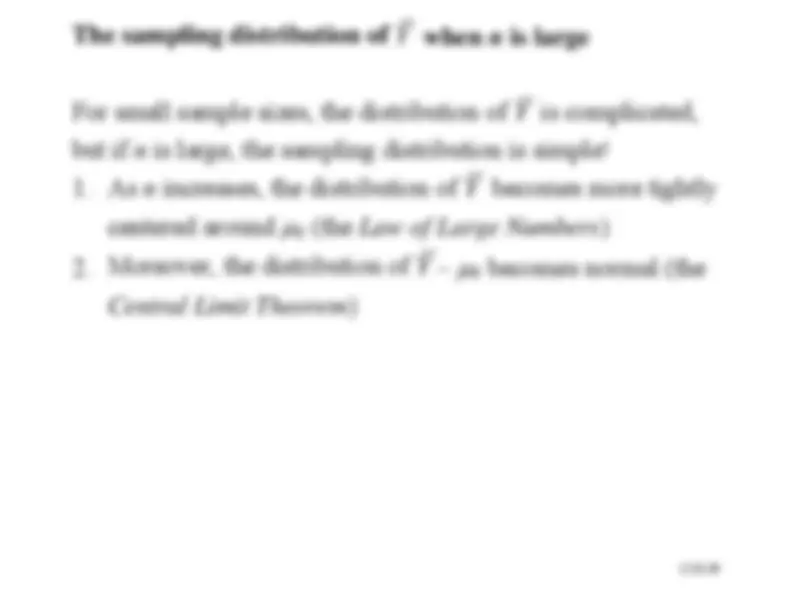
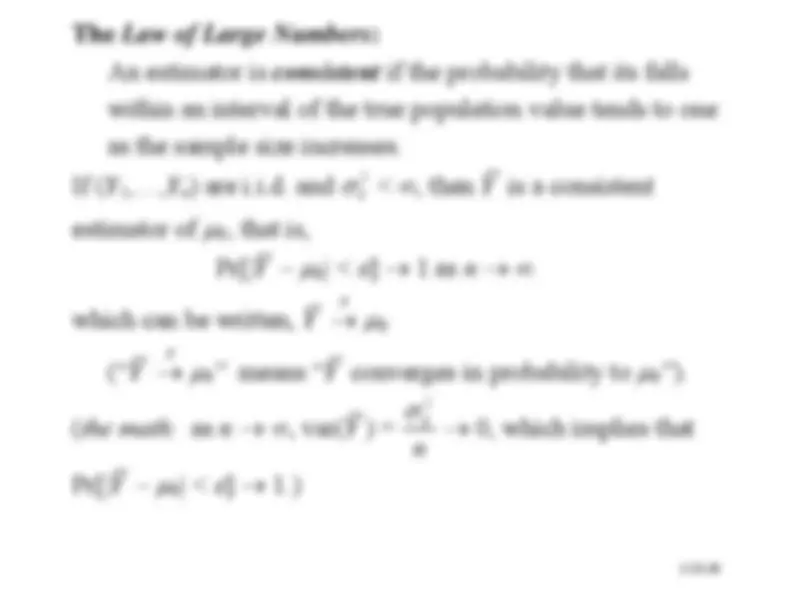
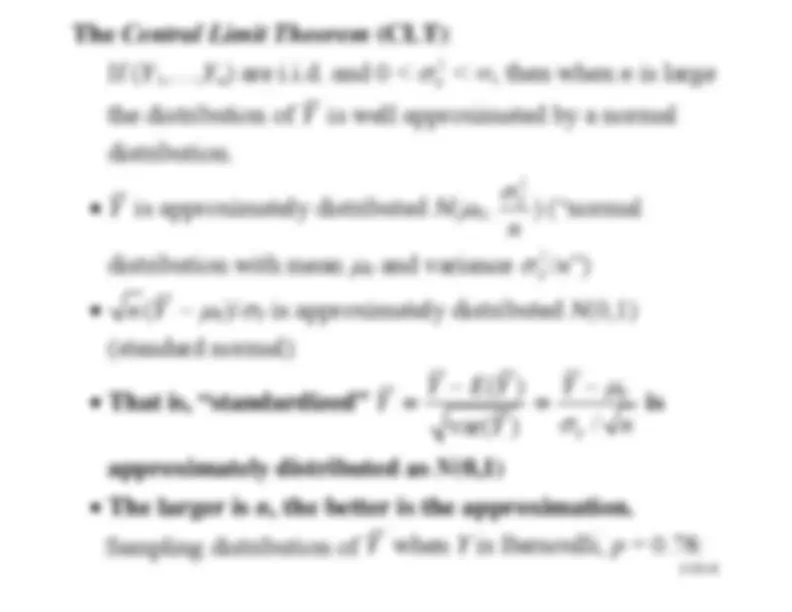
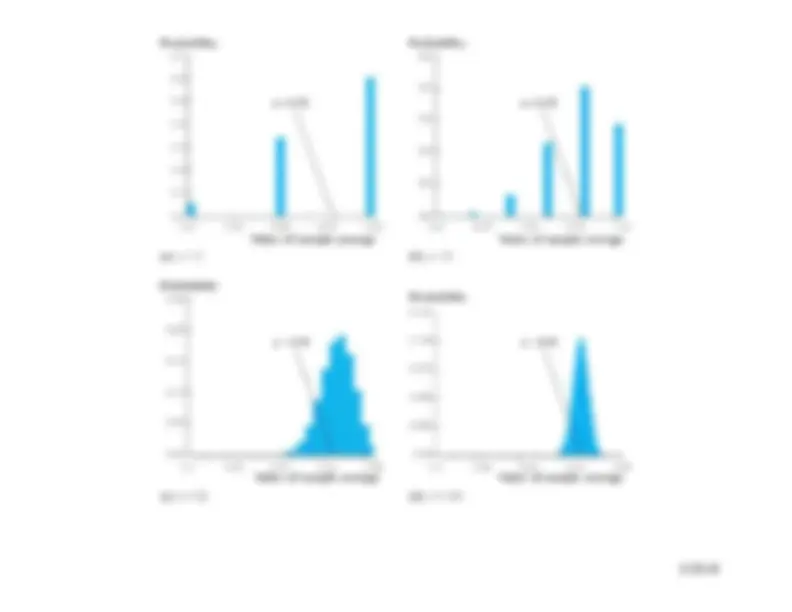
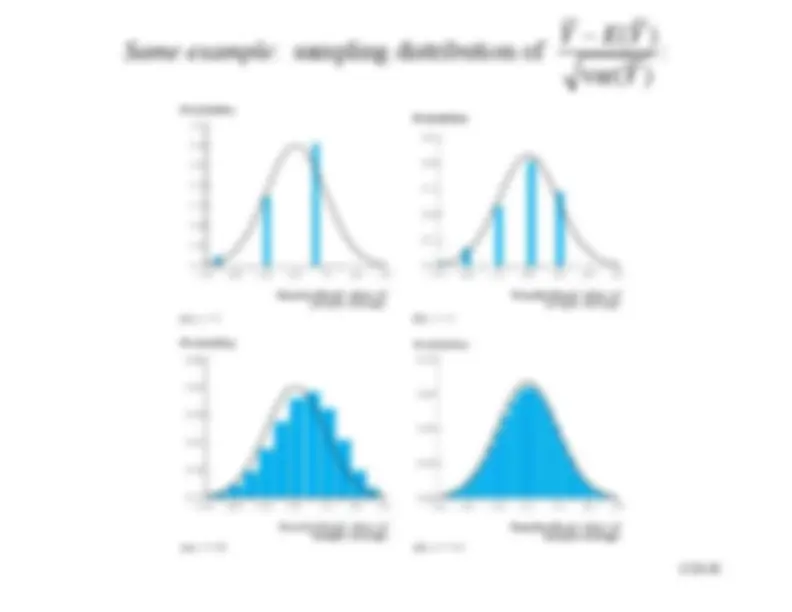
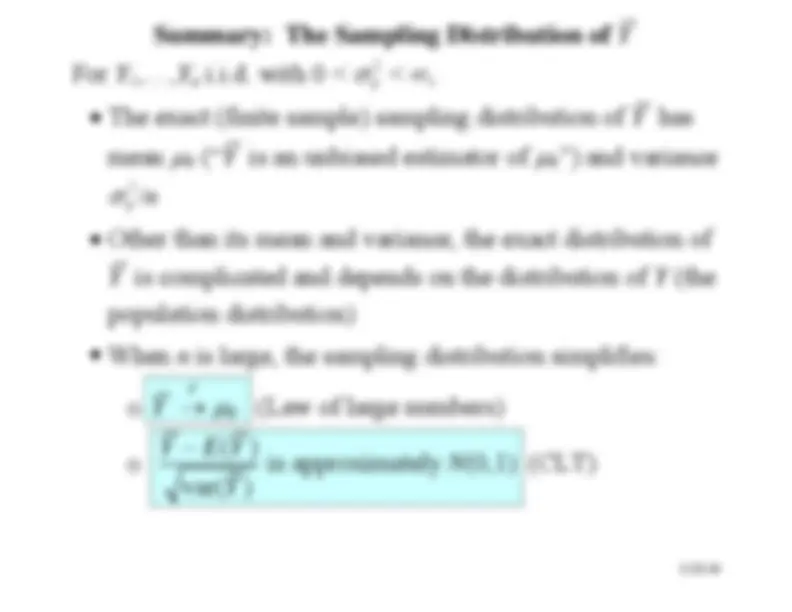
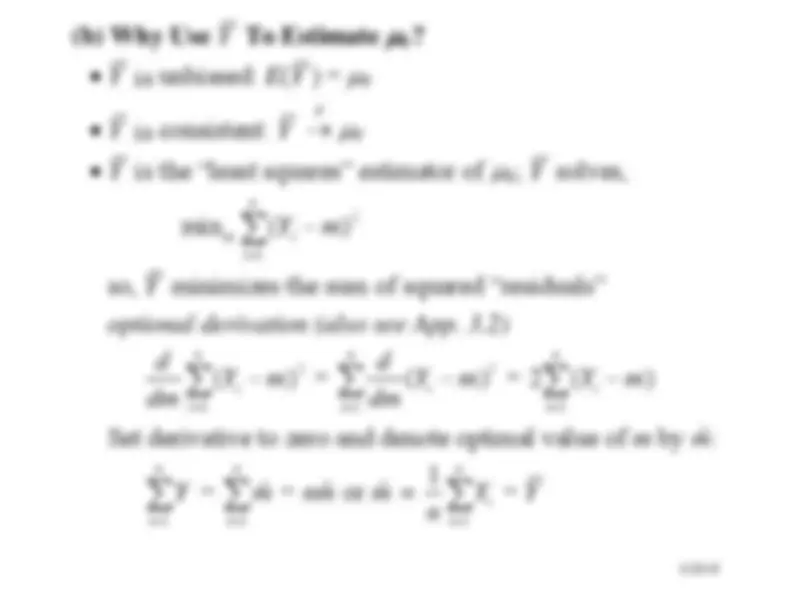
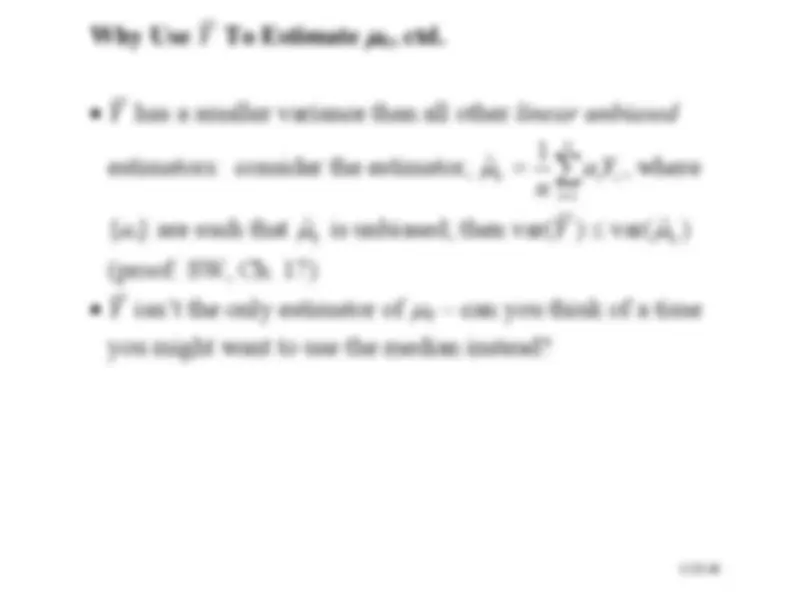
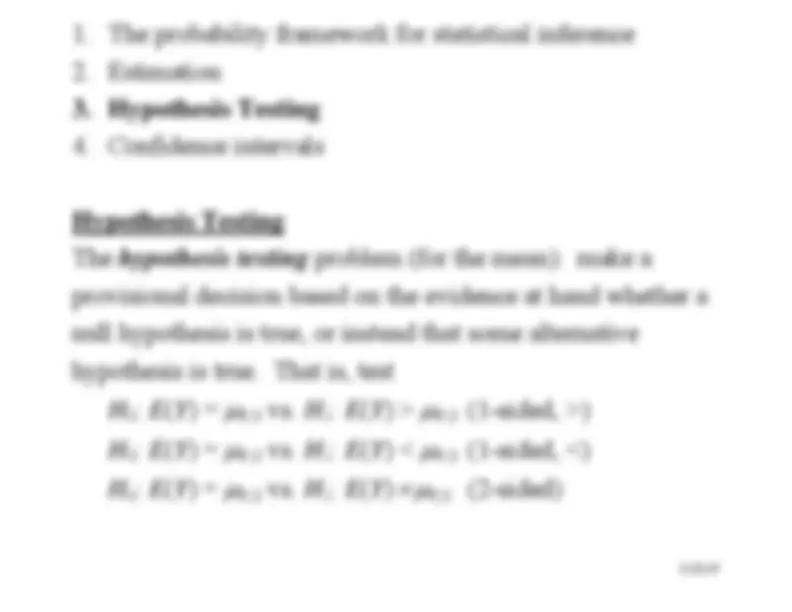
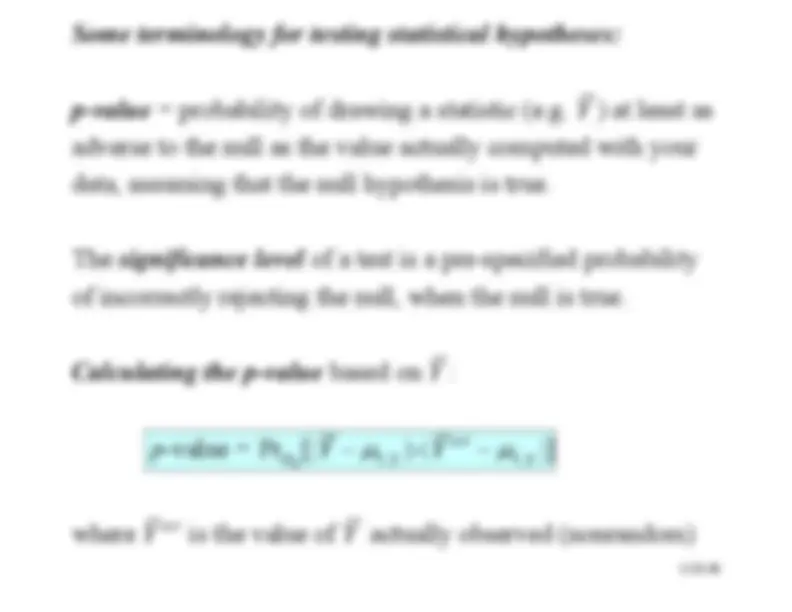
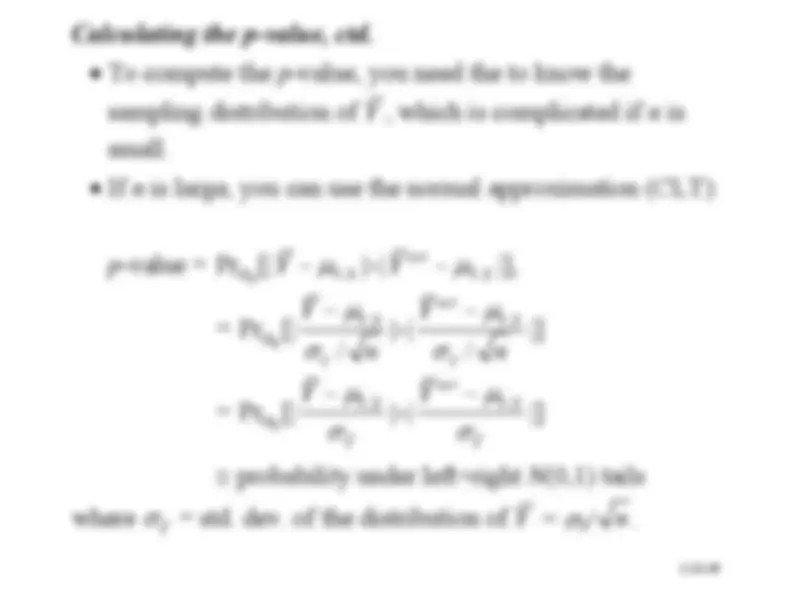
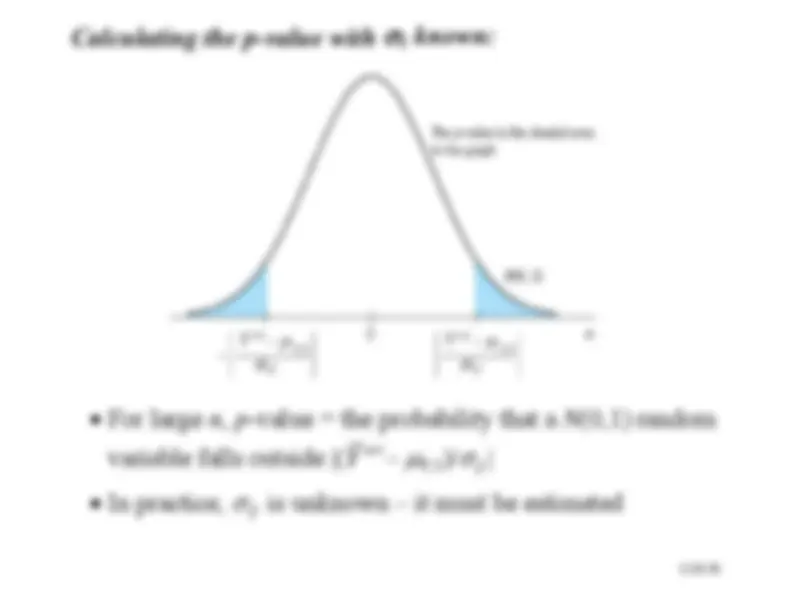
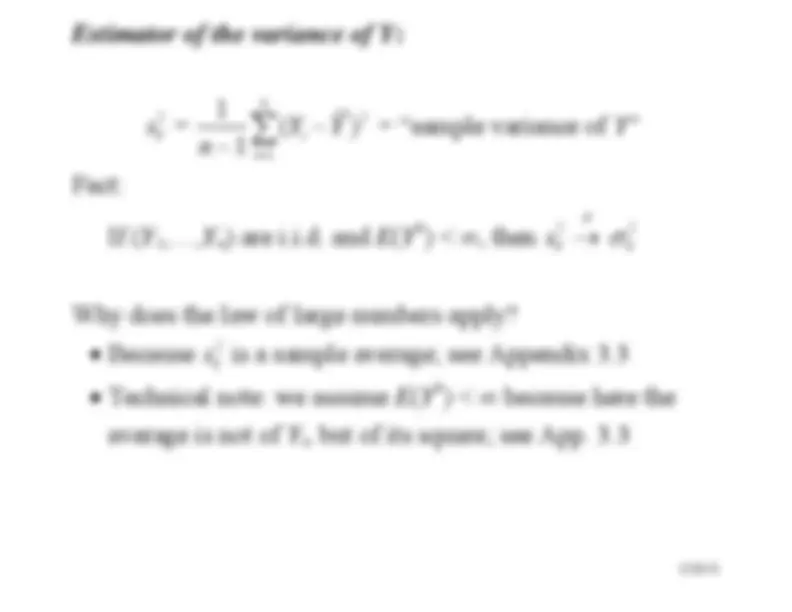
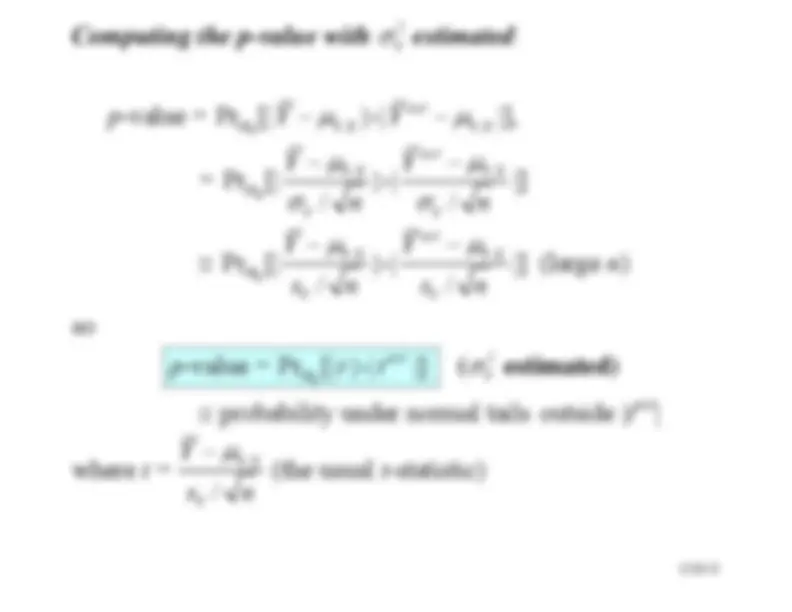
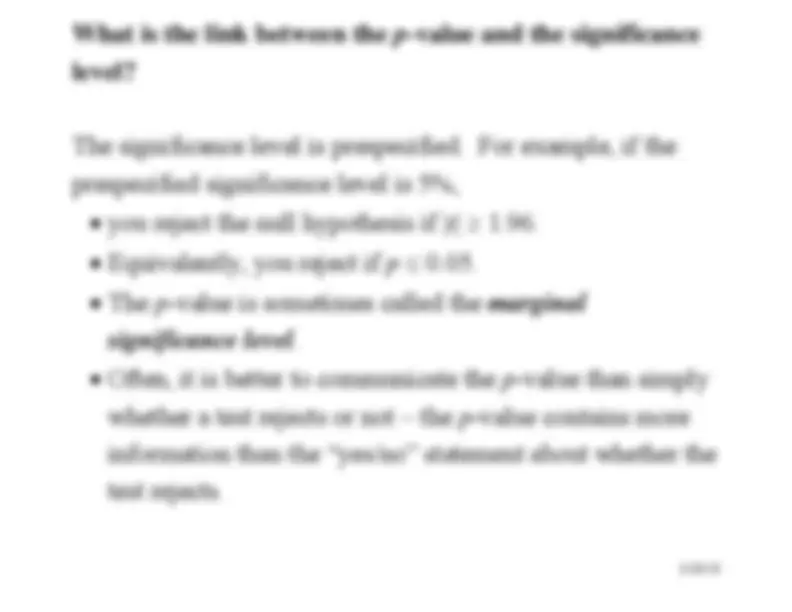
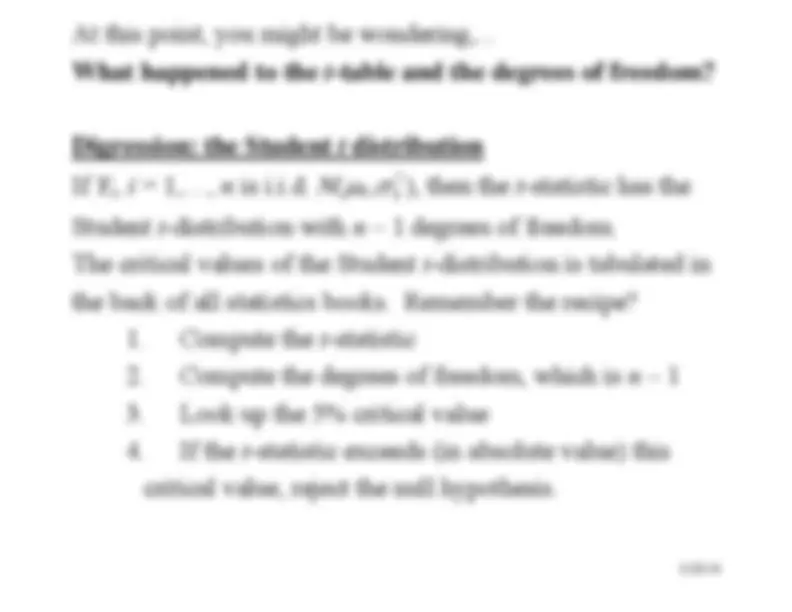
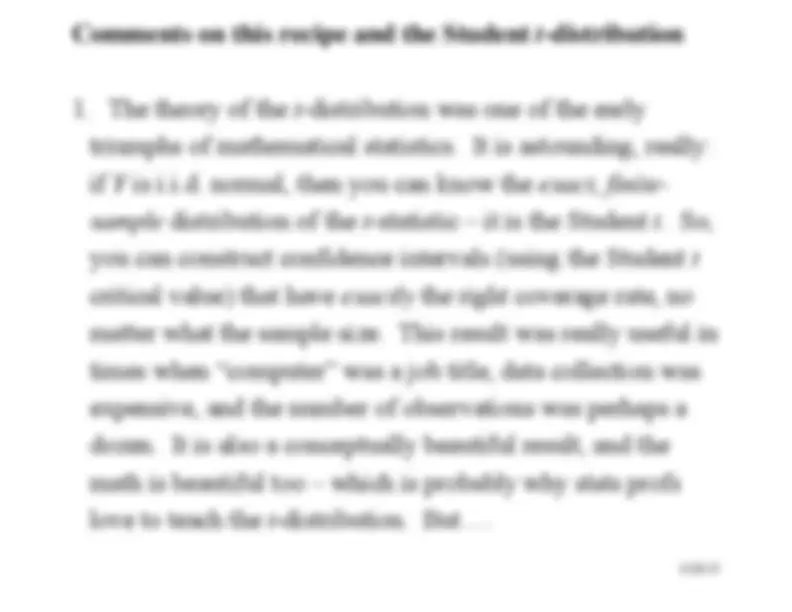
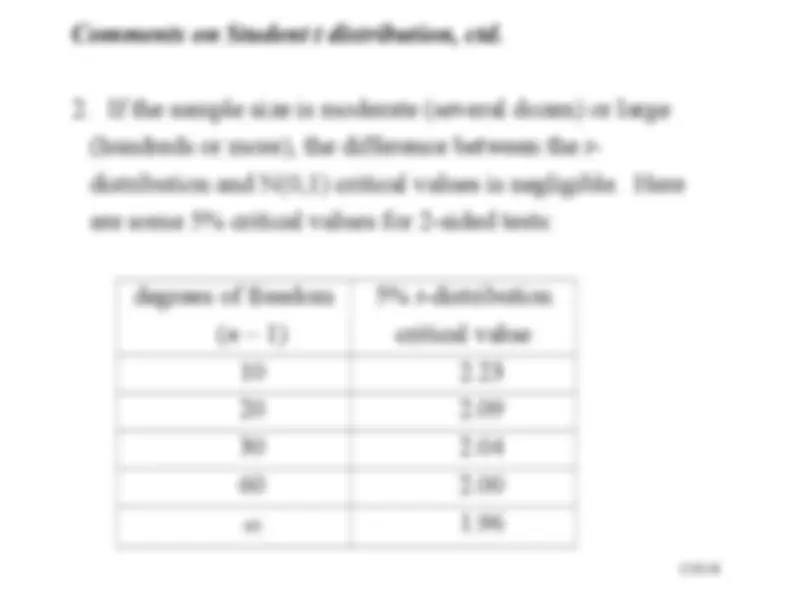
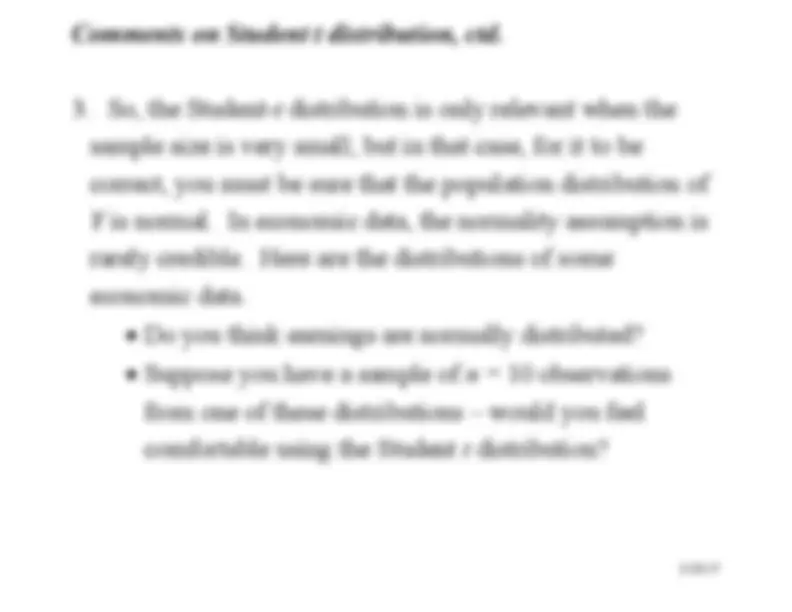
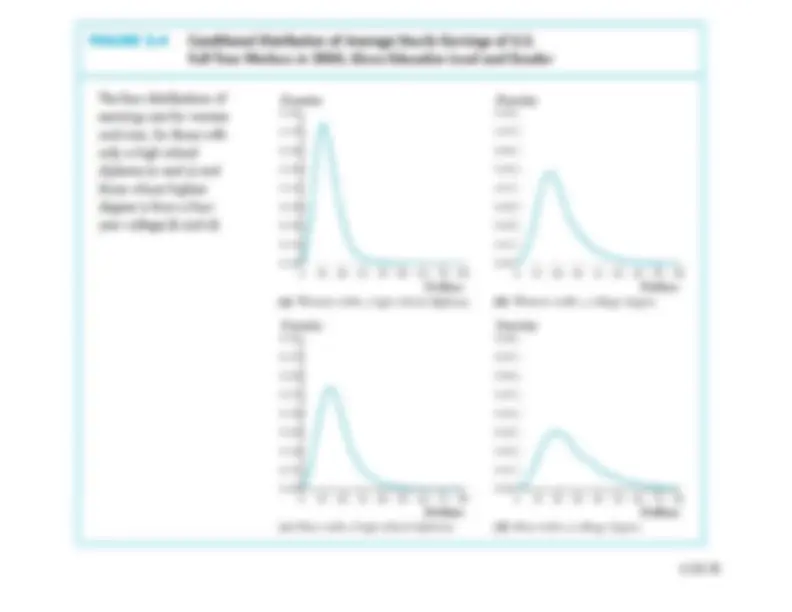
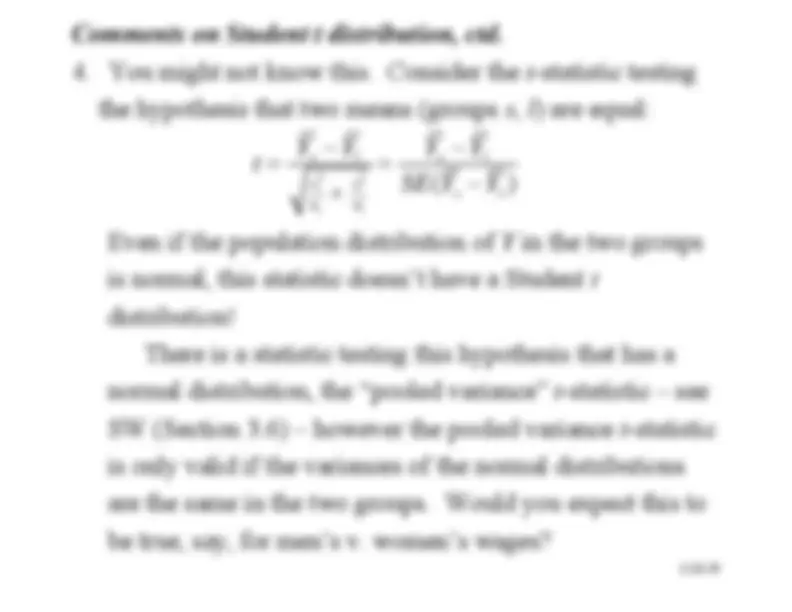
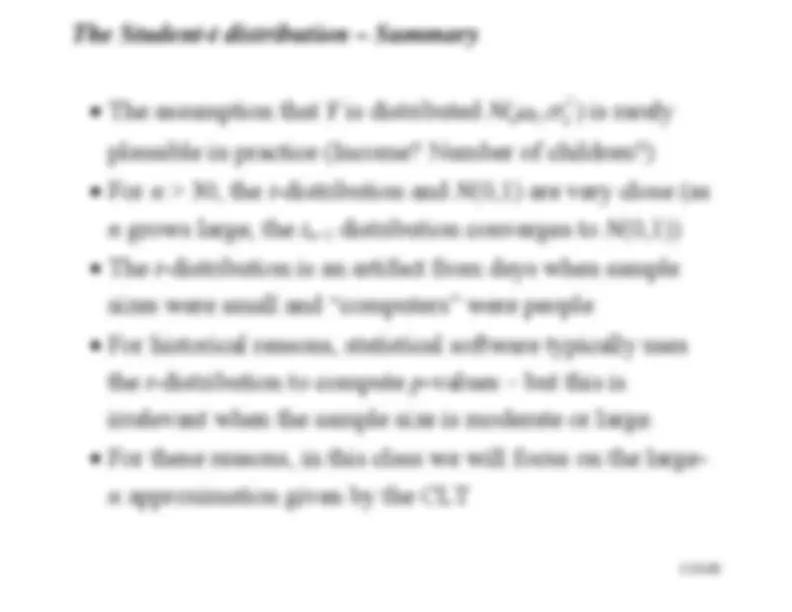
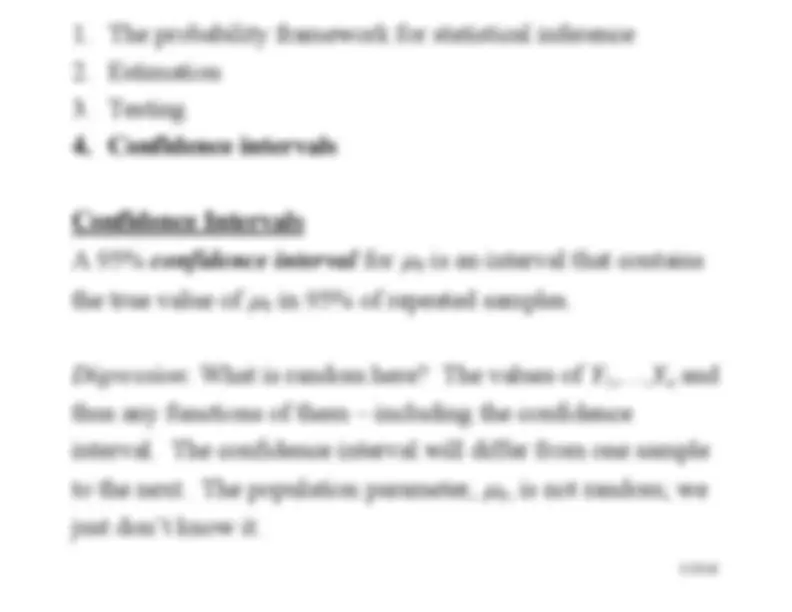
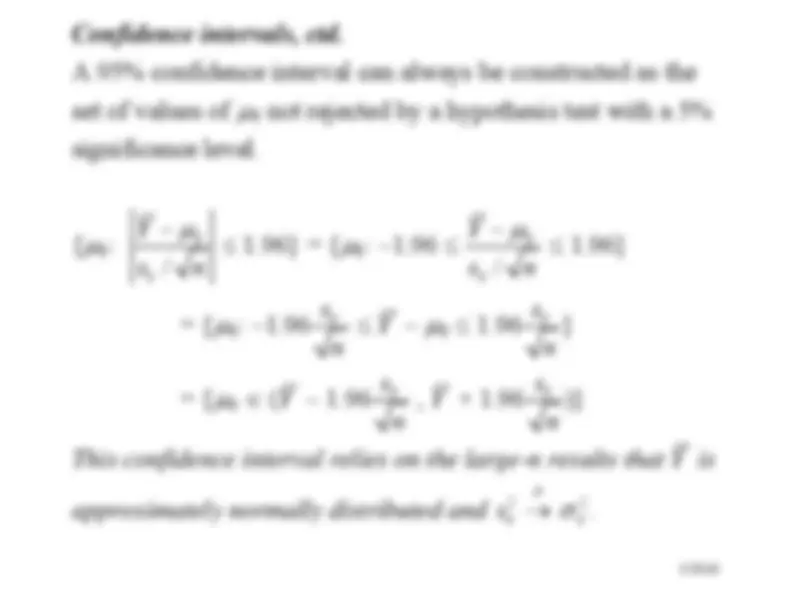
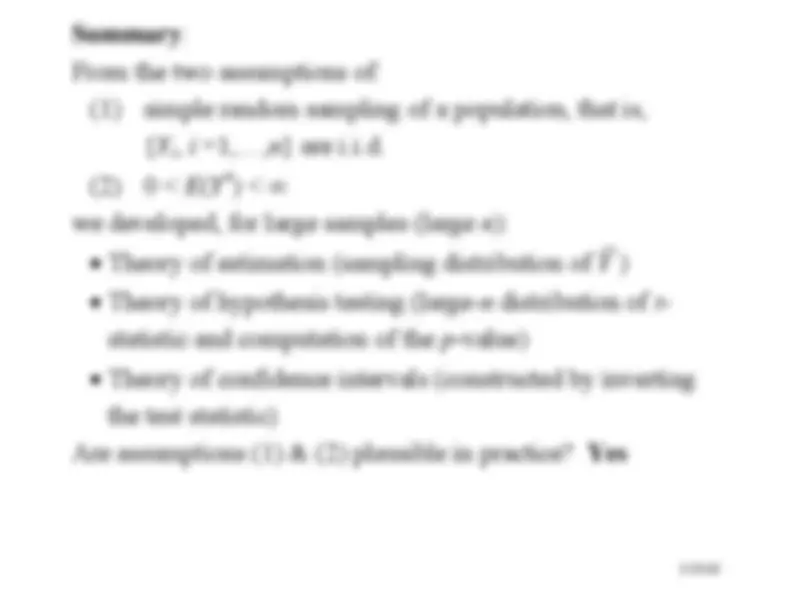
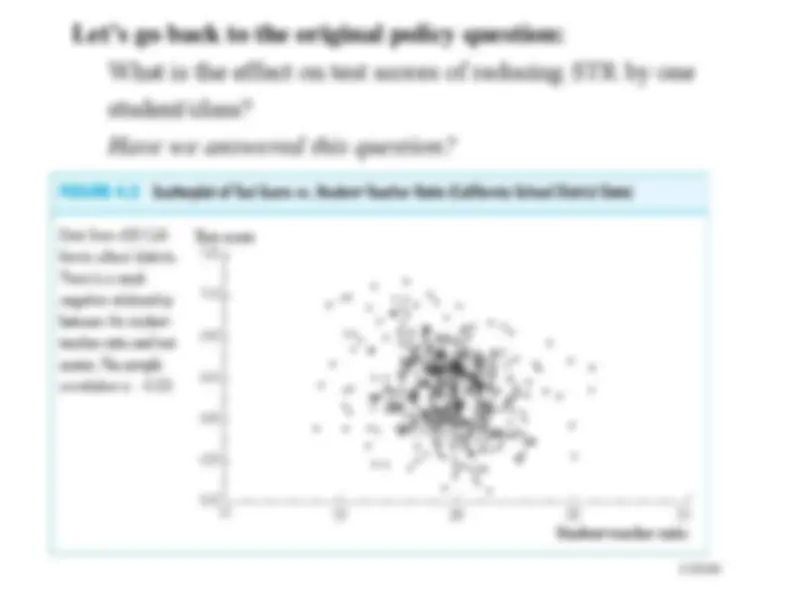


Study with the several resources on Docsity

Earn points by helping other students or get them with a premium plan


Prepare for your exams
Study with the several resources on Docsity

Earn points to download
Earn points by helping other students or get them with a premium plan
Community
Ask the community for help and clear up your study doubts
Discover the best universities in your country according to Docsity users
Free resources
Download our free guides on studying techniques, anxiety management strategies, and thesis advice from Docsity tutors
1/2/3-1. Introduction to Econometrics. Third Edition. James H. Stock. Mark W. Watson. The statistical analysis of economic (and related) data ...
Typology: Exams
1 / 64

This page cannot be seen from the preview
Don't miss anything!

























































The statistical analysis of economic (and related) data
This course is about using data to measure causal effects. ^ Ideally, we would like an experiment
o^ What would be an experiment to estimate the effect ofclass size on standardized test scores?
^ But almost always we only have observational(nonexperimental) data.
o^ returns to education o^ cigarette prices o^ monetary policy
^ Most of the course deals with difficulties arising from usingobservational to estimate causal effects
o^ confounding effects (omitted factors) o^ simultaneous causality o^ “correlation does not imply causation”
In this course you will:
Learn methods for estimating causal effects usingobservational data ^ Learn some tools that can be used for other purposes; forexample, forecasting using time series data; ^ Focus on applications – theory is used only as needed tounderstand the whys of the methods; ^ Learn to evaluate the regression analysis of others – thismeans you will be able to read/understand empiricaleconomics papers in other econ courses; ^ Get some hands-on experience with regression analysis inyour problem sets.
The California Test Score Data Set
All K-6 and K-8 California school districts (
n^
Variables:
th 5 P P grade test scores (Stanford-9 achievement test, combined math and reading), district average ^ Student-teacher ratio (STR) = no. of students in thedistrict divided by no. full-time equivalent teachers
Initial look at the data:( You should already know how to interpret this table
This table doesn’t tell us anything about the relationshipbetween test scores and the
We need to get some numerical evidence on whether districtswith low STRs have higher test scores – but how?
Compare average test scores in districts with low STRsto those with high STRs (“
estimation
Test the “null” hypothesis that the mean test scores inthe two types of districts are the same, against the“alternative” hypothesis that they differ (“
hypothesis
testing
Estimate an interval for the difference in the mean testscores, high v. low STR districts (“
confidence
interval
Initial data analysis:
Compare districts with “small” (STR <
ClassSize
Average score
Standard deviation (
s B^ Y
n
Small
Large
Estimation
of
= difference between group means
Test the hypothesis
that
Construct a
confidence interval
for
2. Hypothesis testing Difference-in-means test: compute the
t -statistic,
2
2
s^
l s^
l s^
l^
s^
l
s^
s^
s^
l
n^
n
Y^
t^
(remember this?)
where
Y^ – s
Y^ ) is the “standard error” of l
Y^ – s
Y^ , the l
subscripts
s^
and
l^
refer to “small” and “large” STR districts,
and
2
2
1
1
n^ s
s^
i^
s
i s
s^
n^
(etc.)
Compute the difference-of-means
t -statistic:
Size
s B^ Y
B
n
small
large
2
2
2
2
238
182
s^
l s^
l s^
l s^
s n^
n
Y^
t^
|t| > 1.96, so reject (at the 5% significance level) the nullhypothesis that the two means are the same.
What comes next…
The mechanics of estimation, hypothesis testing, andconfidence intervals should be familiar ^ These concepts extend directly to regression and itsvariants ^ Before turning to regression, however, we will reviewsome of the underlying theory of estimation, hypothesistesting, and confidence intervals:
Why do these procedures work, and why use theserather than others? ^ We will review the intellectual foundations of statisticsand econometrics
Review of Statistical Theory
The probability framework for statistical inference
Estimation
Testing
Confidence Intervals The probability framework for statistical inference (a)
Population, random variable, and distribution (b)
Moments of a distribution (mean, variance, standarddeviation, covariance, correlation) (c)
Conditional distributions and conditional means (d)
Distribution of a sample of data drawn randomly from apopulation:
B n B
Population distribution of Y
The probabilities of different values of
that occur in the
population, for ex. Pr[
= 650] (when
is discrete)
or: The probabilities of sets of these values, for ex. Pr[640 ^
660] (when
is continuous).
(b) Moments of a population distribution: mean, variance,
standard deviation, covariance, correlation mean
= expected value (expectation) of
B = long-run average value of
over repeated
realizations of
variance
P
(^2) Y
= measure of the squared spread of the
distribution
standard deviation
variance =
B